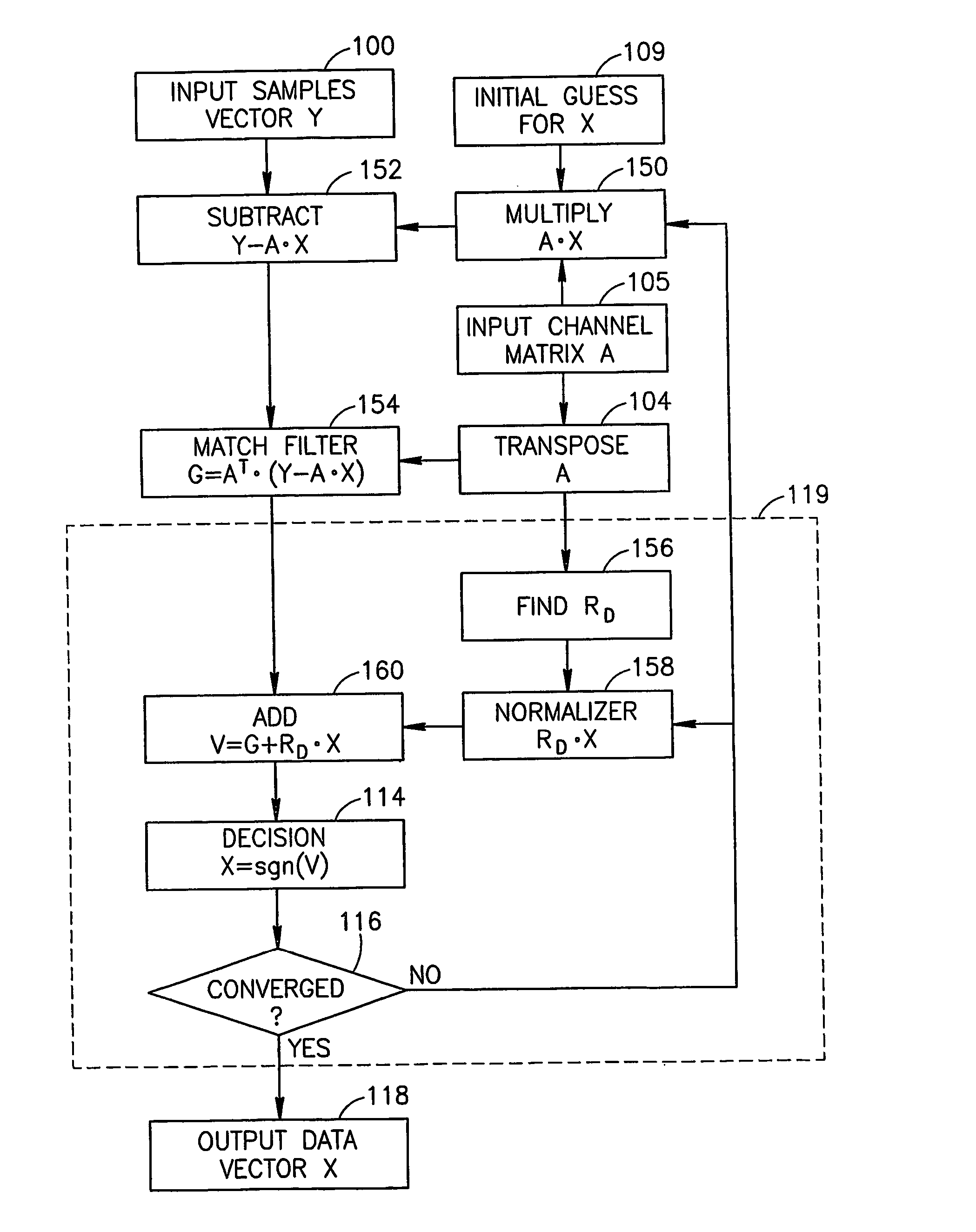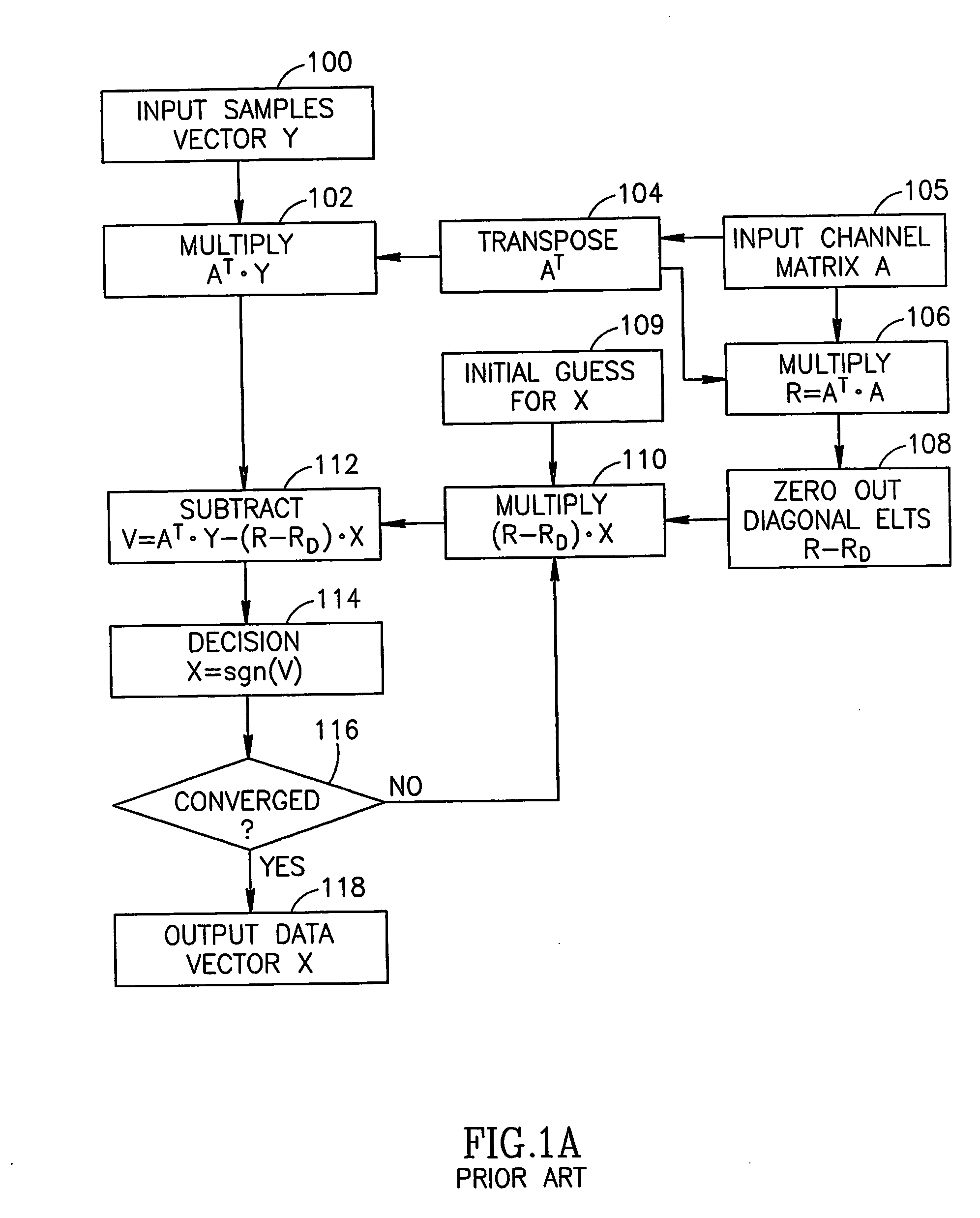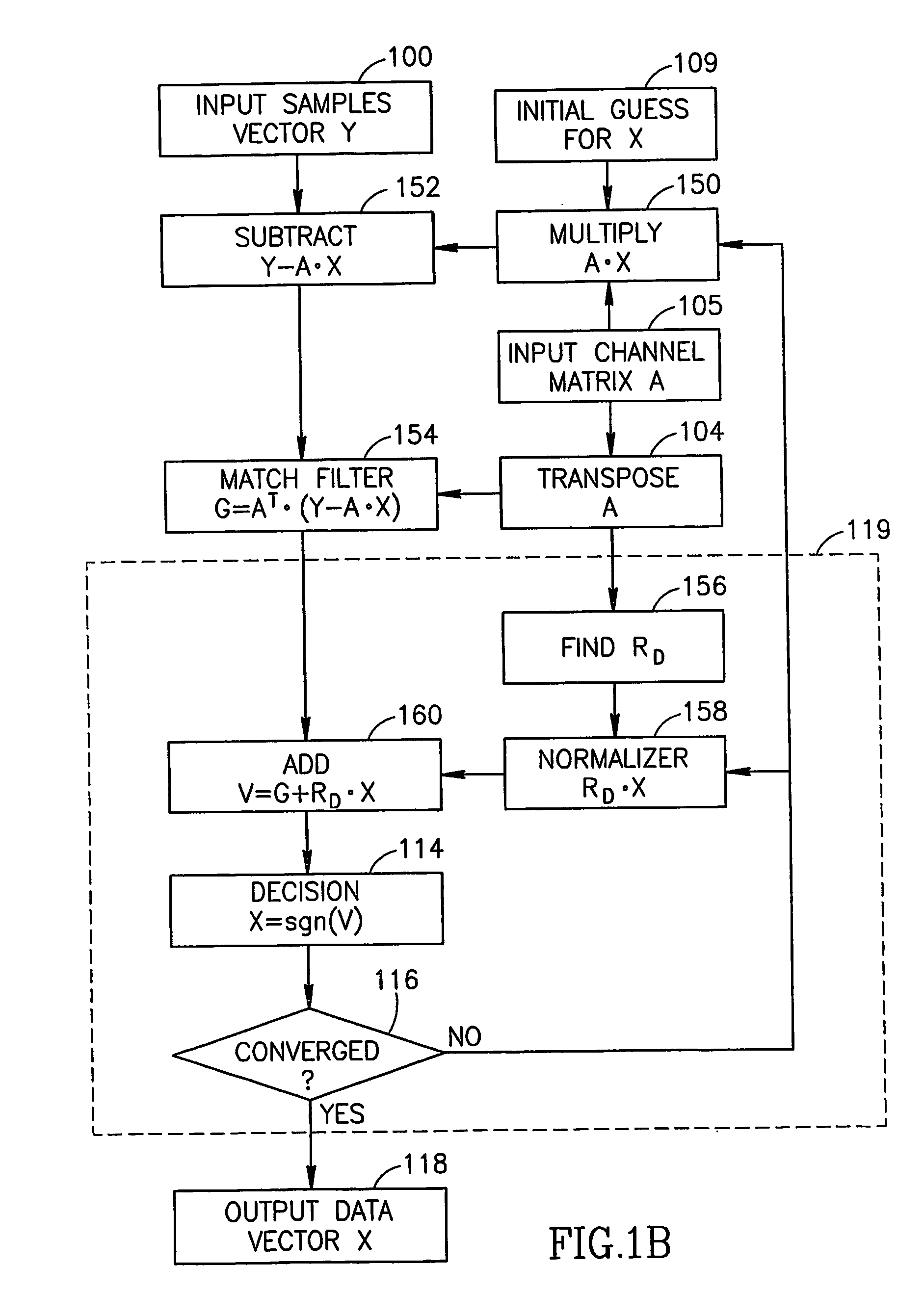Multi-user detection
a detection solution and multi-user technology, applied in the field of multi-user detection, can solve the problems of expensive evaluation of r and inability to try all
- Summary
- Abstract
- Description
- Claims
- Application Information
AI Technical Summary
Benefits of technology
Problems solved by technology
Method used
Image
Examples
Embodiment Construction
[0090] FIG. 1B is a flow diagram showing the procedure used according to an exemplary embodiment of the invention, to search for a the Multi User Maximum Likelihood solution for a transmitted channel vector X, with known received sample vector Y and channel matrix A, in the presence of noise, and with interference between the different channels, i.e. with off-diagonal terms in A.
[0091] In FIG. 1B, as in FIG. 1A, the sample vector Y is read in as input at 100, the transpose A.sup.T of the channel vector A is found at 104 after A is read as input at 105, and an initial estimate for the channel vector X is read as input at 109. In an exemplary embodiment of the invention, the procedure in FIG. 1B differs from the prior art procedure shown in FIG. 1A, for example, in the way that the vector V is calculated. In FIG. 1B, the current estimate for X is multiplied by A at 150, and subtracted from Y at 152. The difference Y-A.multidot.X is multiplied by A.sup.T at 154 to find the gradient vec...
PUM
 Login to View More
Login to View More Abstract
Description
Claims
Application Information
 Login to View More
Login to View More - R&D
- Intellectual Property
- Life Sciences
- Materials
- Tech Scout
- Unparalleled Data Quality
- Higher Quality Content
- 60% Fewer Hallucinations
Browse by: Latest US Patents, China's latest patents, Technical Efficacy Thesaurus, Application Domain, Technology Topic, Popular Technical Reports.
© 2025 PatSnap. All rights reserved.Legal|Privacy policy|Modern Slavery Act Transparency Statement|Sitemap|About US| Contact US: help@patsnap.com



